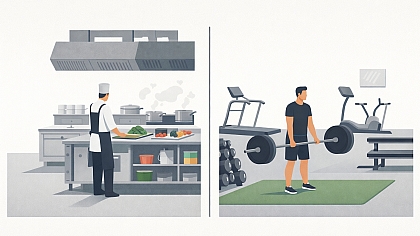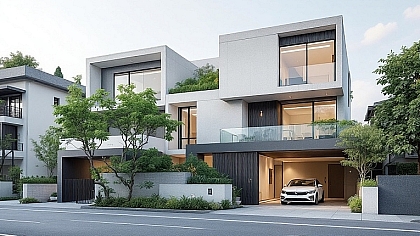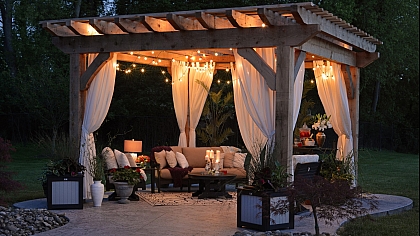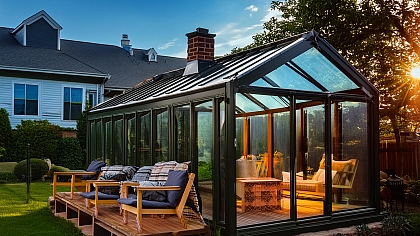
7 Landscape Design Tips for Beginners
Use our beginner-friendly landscaping tips to transform your backyard into a flowering paradise. Get advice on designing your outdoor space to suit your needs.
If you've never had the chance to try your hand at creating a landscape, you'll probably find possibilities somewhat confusing. What kind of plants do you want to include? And which ones should you put in their place? Do paths and bed lines bend or be in a straight line? What about accessories like elegant benches, attractive planters, and birdbaths for attracting colourful wildlife?
It's helpful to envision the backyard as an area inside your house, as many of the rules that govern your room's layout inside can guide your landscaping outside, too.
These seven tips can help you get your landscaping venture off to a great start.
1. Determine Landscape Needs and Wants
Create a list of the things you need and want. Do your children require an area to play? Are you looking to plant vegetables? Would your family like to gather on the patio? Make a rough sketch of your backyard with ideas of where you'd like to put things. It's an ideal way of organizing landscaping design for novices.
These don't have to be master plans (they are just thoughts), according to Marianne Lipanovich, author of the Big Book of Garden Designs. Her plan for her front yard's landscaping overhaul consisted of two lines and a few circles. It is easy to play with concepts without a lot of effort and commitment.
2. Think About the Location
Examine the wind and sun patterns. You may want to consider putting your terrace on the western side of your home, but it'll receive plenty of afternoon sun, and dinnertime in August can be a bit hot. A breeze whirling around the corner could end a fire pit.
These are the most common mistakes made when designing a backyard landscape for those who are new to the field. The design you choose must consider what the sun and the wind perform at different periods of the day and the year.
3. Spend Time in Your Landscape
Quickly assessing your garden can cause you to make choices that don't last long. Take your time for a while before making any adjustments. When you spend more time outside, you'll begin to notice places where you'd like to be seated and go that you would never have considered at first, Lipanovich says.
4. Start Small
Complete outdoor renovations can be completed in three days on the most popular show for home and garden; however, they're able to employ an enormous team to perform the massive lifting and heavy lifting, which is not an experience that's enjoyed by many new gardeners. The key to creating a garden that you will love is gradually forming an idea and then enjoying the process. Start with your master plan and start with a simple garden.
Get out and work on it for a couple of hours whenever you can, and do not stress over the entire area being filled up immediately. Lipanovich says that if you are patient with your landscape design at home, you're less likely to make mistakes or use shortcuts that you'll regret in the future.
5. Find a Focal Point
Every well-designed garden has a focal point or a series of focal points. It's easy to establish. This could be a statue or stunning tree, or a collection of them. The design should draw your attention to the surrounding scene, Lipanovich says.

6. Focus on Scale and Pacing
It's one of the most difficult principles in landscaping design for novices; however, the scale and pace of your yard will create a cohesive style. There are different shapes, sizes, and shades, including large plants against a structure or behind the flowerbed, as well as pathways that guide people through the area.
Lipanovich stresses the importance of striking an equilibrium between repetition and fresh elements. Repetition creates a sense of cohesion, but you need to avoid making it boring. The occasional addition of a new element is more effective than having a variety of elements all over.
7. Be Open to Change
If you're not firmly committed to something, be open about what's working and what's not working in your style. Even Lipanovich discovered things she liked in the past which don't reflect her style. It's fine to experiment and alter your style as you go along.
Keep in mind: Patience is essential to landscaping design for novices. If that empty space is overwhelming to view and your kids and dogs are slogging through the mud, you can use temporary solutions like planting some perennials, mulch, and groundcovers that are fast-growing for covering an area while you work out what you're looking for.
Lipanovich suggests using smaller perennials and annuals around larger plants, which require time to develop and fill up. It is possible to take them out and move them elsewhere when you discover they're not in the right place in the future.
About the Author: Emma Flores
Emma Flores is fortunate enough to turn her interests into a job. Editor and proofreader during work days as well as a freelance writer during weekends, a mum all day long and loves her time most when she runs in the morning with her earphones on. Emma is a part of https://studycrumb.com/ to offer tips on making academic papers that are of the highest quality in standards.












